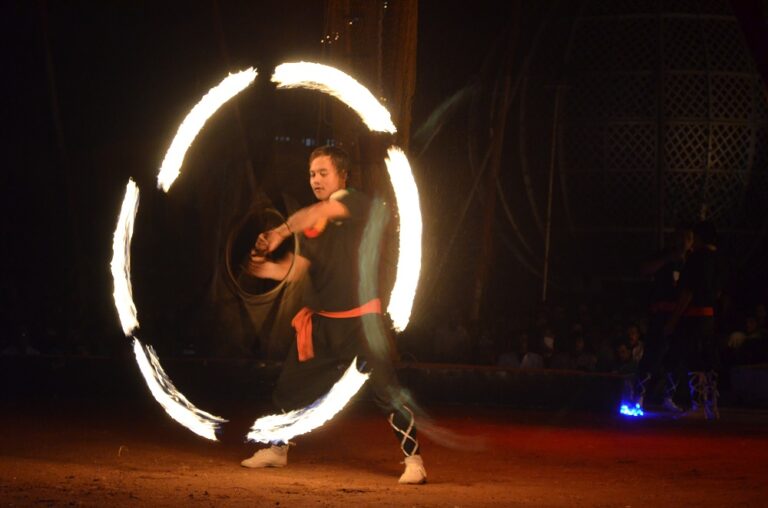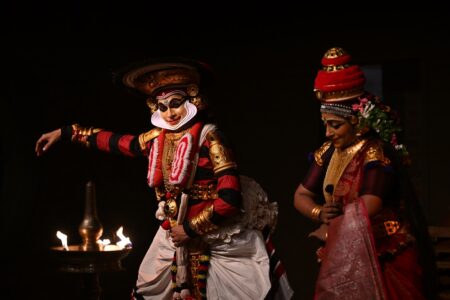The architecture of the circus ring, an unwritten script and how it is used to narrate a story.
In the theoretical discourse on theatre titled Semiotics at the Circus, by Paul Bouissac, Professor Emeritus at the University of Toronto (Victoria College), writes: The circus “emerged as parallel to the perpetuation of an ancestral nomadic way of life. For many circus families they are still making a living out of the social environment by performing spectacular feats”.
Bouissac continues to say that the industry needs a “free space and an audience in order to draw its resources from its social environment”. He further continues to argue that settling down in the outer boundaries of a city becomes an economical option for the circus shows due to sky-high rents in city spaces. Bouissac also lists the downside of setting up the shows outside the hub of the city.
“Peripheral space is more affordable but involves risk of being out of reach,” he writes. “Hence the monumental display of signs – in the both commercial and theoretical sense of the term purports to freely disclose the extraordinary nature of the spectacle to be seen inside without delivering too much of the actual experience.”
Not just the show, circus architecture is also an important feature of the show. The design of the arena, the seating area, the open yet closed environment, and even the smells and sounds of the circus are strong and are commonly found in and around the circus shows.
“Between the animal enclosures at the back and the directorial family trailers, often ostentatiously located at the front, distinct areas are staked out and invisible fences prevent undesirable mingling. The audience is filtered by a uniformed team and everyone is directed to the category of seat where he or she belongs,” writes Bouissac.
A typical example to illustrate the way in which the space of performance itself operates in a clown act. Ramu and Rani are two clowns who were a part of the programme of the Jumbo Circus. They presented several acts during the show. However, the “bird” act was an exceptional part of their repertoire. In the dimmed light that followed the end of the previous act, the song of a mysterious bird is heard from the top of the tent.
Ramu emerges from the audience space under a bright spotlight and walks down toward the ring. He carries long, green ladder and proceeds while repeatedly calling “Little bird! Little bird”! Rani, a woman, enters the ring holding a very large bird cage made of reed. As he sees her with the cage, Ramu changes his calling to “Big bird! Big bird!”
Meaningful display of skills in circus
As soon as the Ramu and Rani meet at the centre of the ring, they endeavor to catch the invisible bird which seems to be high above. Each climbs the ladder in turns while the other holds it vertical. However, a series of mishaps seem to prevent them from achieving their goal: they fall from the ladder, some rungs break under their weight, the sides come apart and “hurt” them, and they eventually fight each other when they fail to put the ladder back together. Then the woman Rani gets another ladder from backstage.
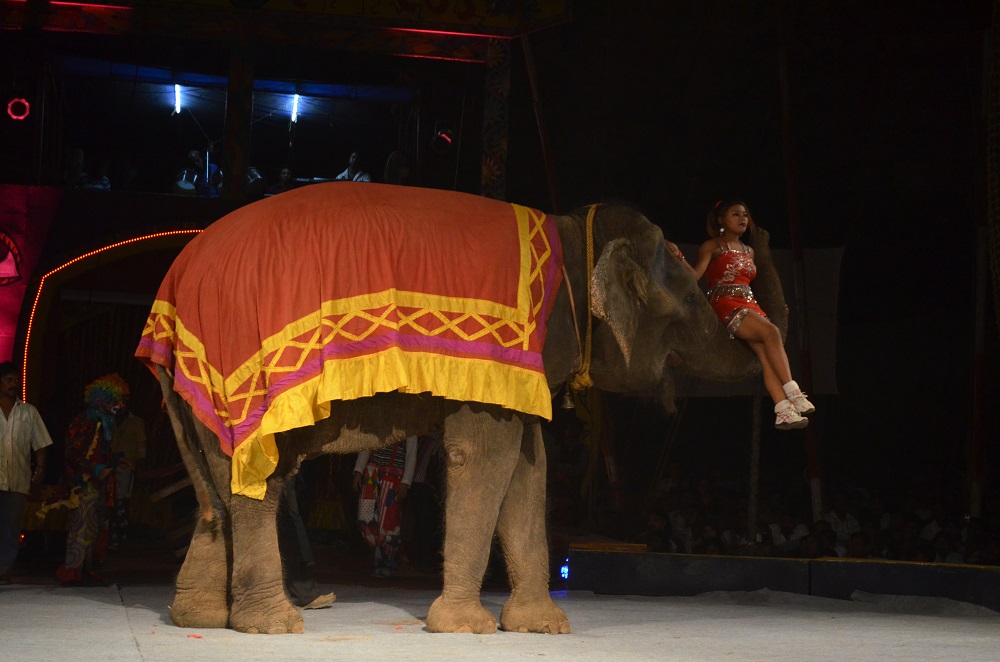
Ramu starts climbing it and they decide to play some music in order to attract the bird. Ramu climbs down and is given an accordion and climbs up again, but this time with his back toward the ladder while Rani holds it. Suddenly, Rani declares that she wants to play some music too and leaves the ring.
The ladder is not supported any longer but Ramu keeps it vertical as a balancing acrobat who maintains his composure standing on the top of an unsupported ladder. He keeps playing his accordion in this position.
Rani comes back and wants to hand over the big cage to Ramu, reminding him that their goal is to catch the bird. She throws the cage to Ramu who catches it but after some awkward attempts at reaching for the invisible bird he drops the cage that falls on to Rani. As the cage has no bottom, Rani is now within the cage. She mimics with her arms the fluttering of wings.
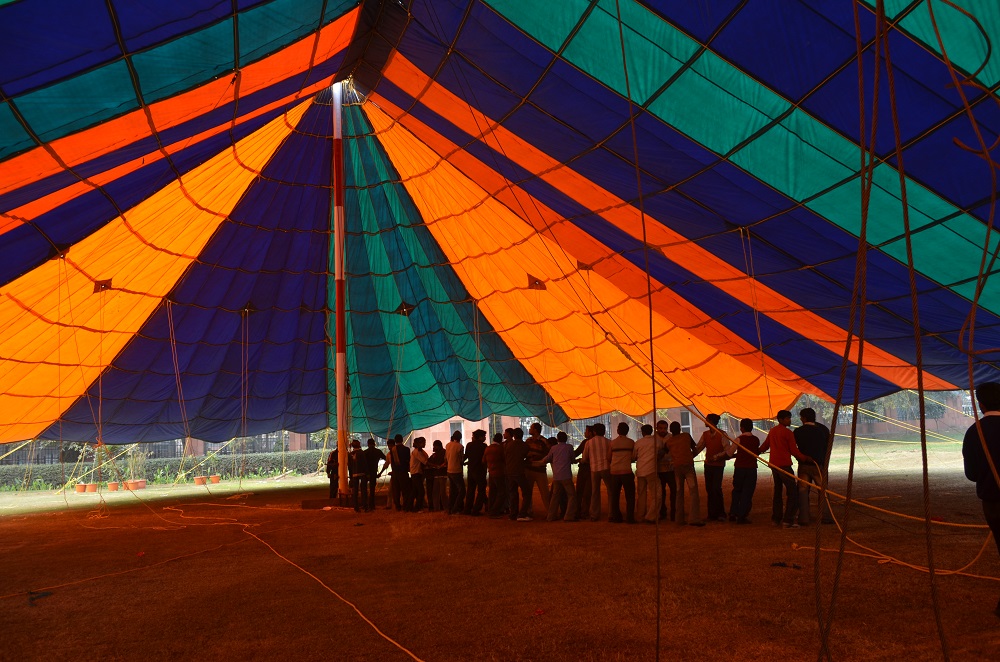
Ramu jumps from the ladder, holds the cage and triumphantly says “Bird!” His quest is over and they exit the ring together while the audience applauds.
The balancing act
This act starts with a markedly different situation: their respective spaces are disjointed since the man is wandering in the public space while the woman enters the ring by the normal way. When they eventually meet in the centre of the ring their relationship is dysfunctional as the successive gags consist of failures by Ramu to capture the out-of-reach object of his desire.
Two means are used in order to attempt to overcome the vertical distance: the ladder, which makes it possible to proceed toward the top, and the music, which is used to try to attract the bird toward the bottom. But they both prove to be obstacles rather than helping.
It is very significant that the cage brought by Rani is grossly disproportionate with respect to the usual size of a songbird which could easily escape even if it was caught. It is a spatial metaphor bearing upon the relation between container and content or between desire and satisfaction.
The beauty of the unwritten scripts
The visual conclusion of this lofty quest is that what Ramu wanted to capture is what he already had: that is, Rani, who actually fits the dimension of the cage and stands on the same plane as he does. With the realization of the “happy ending”, the fable of a lost and found, harmonizes between a man and a woman, was implemented by articulating its semiotic unfolding entirely by visual means.
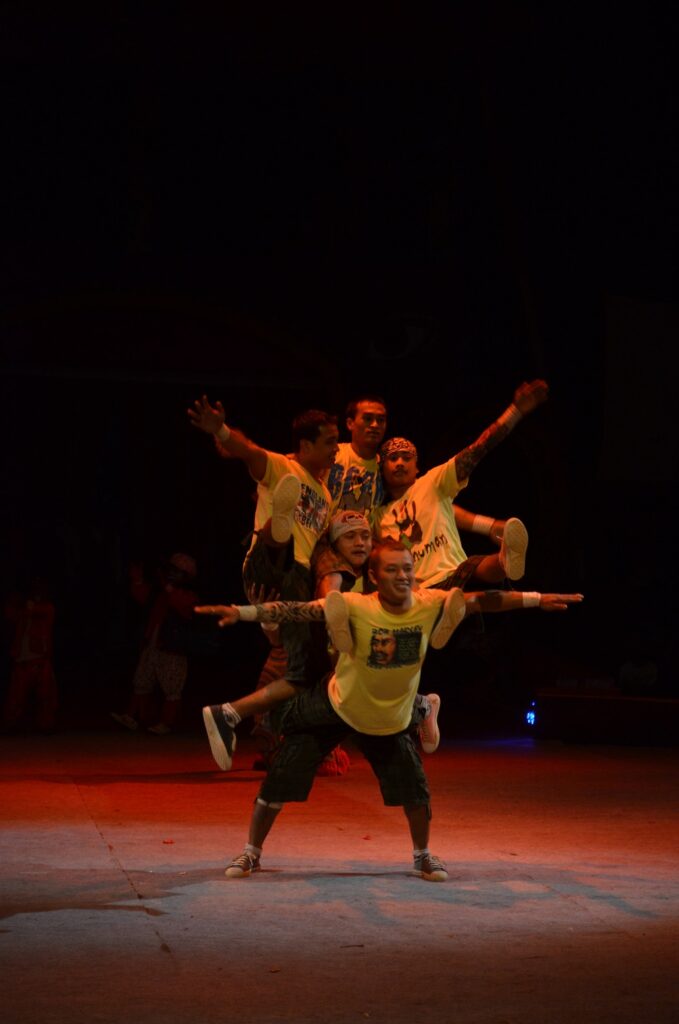
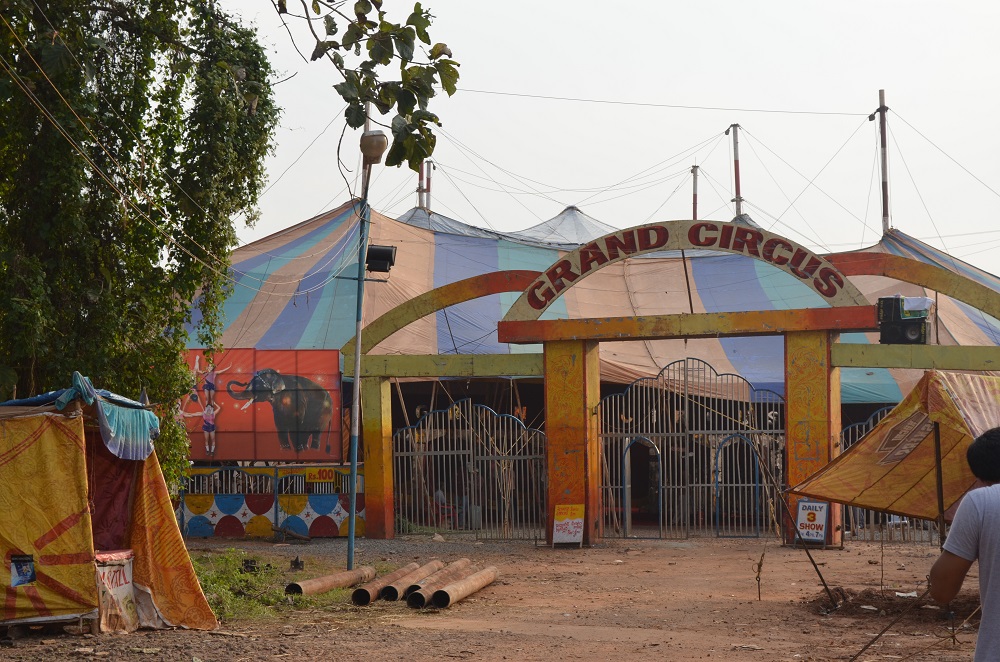
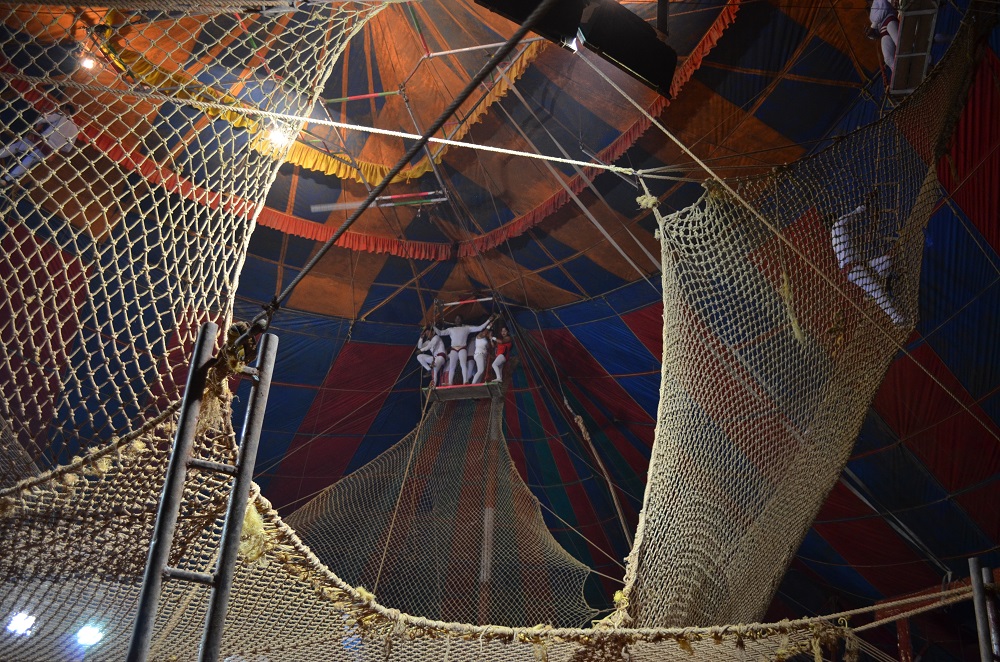
However, clowns know very well what they are doing and their mostly unwritten scripts are very precise even though they allow for minor variations according to contexts and circumstances.
The show begins
The idea to combine theatre and circus finally culminated with a series of show titled Clowns & Clouds. National School of Drama’s Second Year students put together a show in collaboration with Grand Circus.
Here we encountered many examples of the ways in which the technical constraints that govern circus acts combine with these spatial semiotic categories to produce meaningful displays of skills molded into dramatic visual narratives.
Click here to read more on the series
Write to us at [email protected]

